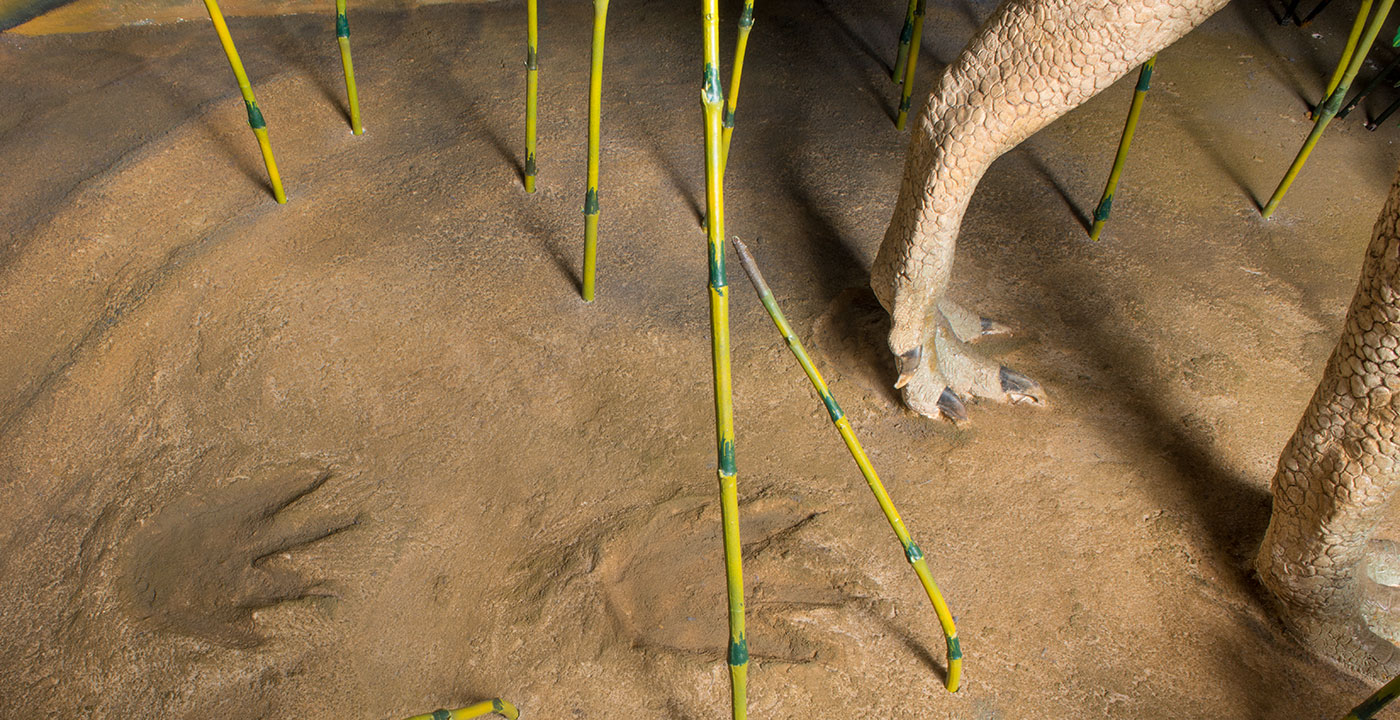Special Features - Slideshow
Who Made These Tracks? Dinosaur Types

Detail of dinosaur diorama at the Beneski Museum of Natural History. Image courtesy of Beneski Museum of Natural History at Amherst College.
About this Slideshow
How can we know what kind of dinosaur made a particular footprint, or even kind of footprint? The short answer is, we cannot. Footprints and bones have different requirements for preservation, so that even if a dinosaur obligingly laid down and died right next to its footprints, it is unlikely that either of them would become fossilized and nearly impossible that both would.
Therefore, paleontologists must associate certain types of dinosaurs with certain types of footprints. Imagine that you see dog footprints in the mud of your unpaved driveway. You will know that a dog ran across your driveway, and you'll be able to tell if it was a big dog or a little one, but not whether it was a golden retriever or a German shepherd, a Boston Terrier or a greyhound. Similarly, dinosaur footprints cannot be confidently identified with a certain type of dinosaur, so footprints and skeletons have different naming systems. (Sometimes the clues are so strong that paleontologists do say that certain tracks belonged, for example, to a Stegosaurus, but this is not usual.) This is not the case for the kinds of footprints found in the Connecticut River Valley.
Just as you might narrow down your possible culprit by surveying the neighborhood dogs, paleontologists associate footprints with dinosaurs known to have lived in a given area during the time when the tracks were made. They do this based on rock type, which gives a time period range, and with such attributes of the dinosaur as foot size and the length of the step and the stride.
All footprint fossils shown in this slideshow are from Edward Hitchcock's "Ichnology of New England" and are illustrations of actual fossils from the collection of the Beneski Museum of Natural History.